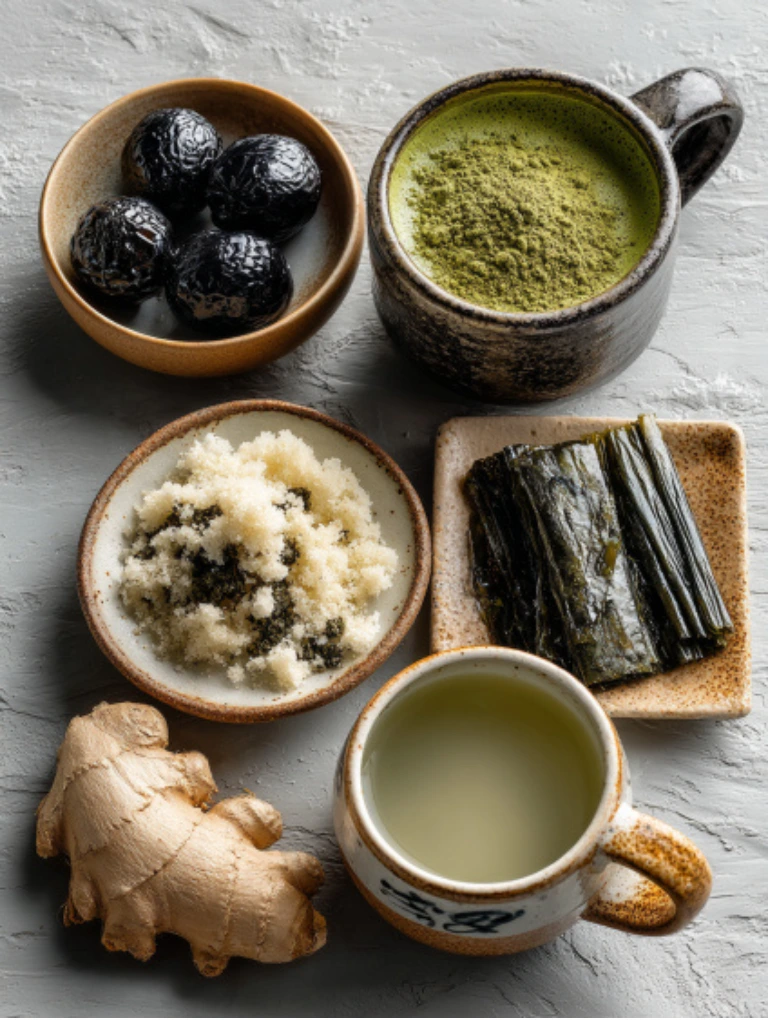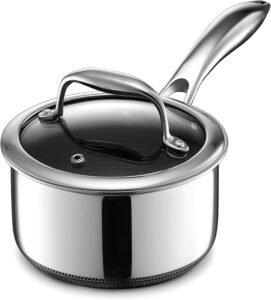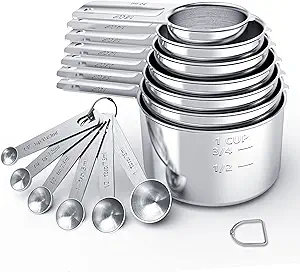If you’ve heard the buzz about the Japanese Mounjaro detox drink for weight loss and energy boost, you’re not alone. This vibrant green drink, rooted in ancient ingredients like matcha, kombu, and ginger, is gaining popularity across wellness circles and for good reason. It’s refreshing, light, and surprisingly easy to make at home.
If you want the full Japanese method, see the Japanese Mounjaro Recipe.
Unlike synthetic supplements or hyped-up powders, this drink draws on whole-food ingredients to gently support your routine. Whether you’re aiming to wake up with clarity or prep your body before meals, this traditional-style tea delivers flavor with purpose. Just don’t expect it to mimic GLP-1 drugs this is a natural habit-builder, not a miracle in a mug.
Table of Contents
Why You’ll Love Japanese Mounjaro Detox Drink
- Quick & fuss-free: Just a few ingredients and 10 minutes stand between you and your first cup.
- Gentle energy boost: Thanks to matcha, it gives you a clean lift without the crash.
- Soothing & satisfying: Ginger and umeboshi bring a comforting warmth that calms the stomach.
- Perfect for mornings: Drink it on an empty stomach to kickstart hydration and appetite control.
- Naturally detoxifying: Kombu and lemon add trace minerals without any gimmicks or harsh cleanses.
This version blends wellness with simplicity. You’re not chasing trends you’re building a mindful ritual. Plus, there’s flexibility. Whether you lean into the traditional Japanese ingredients or stick with pantry staples, the drink adapts to your life not the other way around.
Ingredients Needed For Japanese Mounjaro detox drink

You can make this detox drink two ways: a traditional-inspired version with Japanese staples, or a more pantry-friendly option using ingredients you probably already have.
Traditional-Inspired Version
- 1 tsp ceremonial-grade matcha powder: Look for bright green color and fine texture
- 1 umeboshi plum or 1 tsp umeboshi paste: Salty, sour, and deeply umami
- 1 tsp freshly grated ginger: Adds warmth and digestive support
- 1 small strip kombu (about 2 inches): A sea vegetable rich in iodine and minerals
- 1 cup warm water (about 175°F or 80°C): Not boiling, or matcha gets bitter
- Optional: 1 tsp raw honey or squeeze of lemon: For flavor balance
Pantry-Friendly Version
- 1 tsp matcha or green tea powder: Any unsweetened matcha will do
- 1 tsp grated ginger or ginger tea bag: Fresh is best, but bags work in a pinch
- 1 tsp apple cider vinegar (with the “mother”): For tang and gut-friendly acidity
- Juice from ½ lemon: Bright, cleansing citrus
- 1 cup warm water
- Optional: ½ tsp raw honey or maple syrup
- Optional: Pinch of pink salt: Adds electrolytes and a savory edge
Prefer a simpler green-tea route? Try the Natural Mounjaro Recipe With Green Tea.
Notes & Substitutions
Ingredient Swaps & Considerations
- Matcha: If you’re sensitive to caffeine, try a low-caffeine green tea powder or even decaf green tea. The energy boost will be gentler but still effective.
- Ginger: No fresh ginger? A ginger tea bag or ¼ tsp ground ginger can work. The flavor’s different, but the warmth still comes through.
- Umeboshi: If you can’t find umeboshi plums or paste, skip them or add a dash of tamari for salty depth.
- Kombu: Avoid kombu if you have thyroid issues or iodine sensitivity. Just use warm filtered water instead.
- Apple Cider Vinegar: Sensitive teeth? Add the vinegar after the drink cools slightly and sip with a straw.
- Honey/Maple Syrup: Optional and best added after cooling to preserve nutrients. Stevia or monk fruit also work.
- Pink Salt: Useful for morning hydration, but skip it if you’re watching sodium or combining this with salty foods.
Diet-Friendly Notes
- Gluten-Free: All ingredients listed are naturally gluten-free.
- Dairy-Free: Completely dairy-free and vegan-friendly if honey is omitted.
- Budget-Friendly: Pantry version uses accessible staples without specialty imports.
This drink is meant to work with your body, not against it. Feel free to adjust ingredients based on your needs, taste, and health conditions.
How to Make the Japanese Mounjaro Detox Drink
Follow these steps based on which version you’re making. Each method takes about 10 minutes.
Traditional-Inspired Version
- Soak the kombu
Place the kombu strip in a mug or small pot with 1 cup of warm water (about 175°F). Let it sit for 5 minutes to infuse, then remove the kombu.
Why? This adds minerals and subtle umami without overpowering the flavor. - Whisk the matcha
In a small bowl, whisk 1 tsp matcha powder with 2 tablespoons of the kombu-infused water. Use a bamboo whisk or small frother until smooth and frothy.
Tip: Avoid clumps by sifting the matcha first. - Add ginger and umeboshi
Stir in the grated ginger and umeboshi paste (or mash in the plum). Mix until fully dissolved. - Combine and flavor
Pour the matcha mixture back into the remaining kombu water. Stir well. If desired, add a little honey or lemon to balance the taste. - Serve warm
Sip slowly on an empty stomach or about 30 minutes before your first meal.
Pantry-Friendly Version
- Simmer the ginger
Add 1 tsp grated ginger to 1 cup of water. Bring just to a simmer, then turn off the heat and let steep for 3–5 minutes. Strain if desired. - Cool slightly before adding vinegar
Let the liquid cool to about 130–140°F before adding 1 tsp apple cider vinegar and lemon juice.
Why? This protects your teeth and preserves vinegar benefits. - Whisk or stir in matcha
Add matcha and whisk until smooth. No frother? A spoon works fine, just stir briskly. - Adjust flavor
Add a drizzle of honey or maple syrup if needed. A pinch of pink salt helps replenish morning minerals. - Enjoy mindfully
Drink warm or at room temperature, ideally before breakfast.
For a side-by-side perspective on styles, check the Mounjaro Weight Loss Drink Recipe Brazilian & Japanese Versions.
Pro Tips & Troubleshooting
Expert Tips
- Use the right water temperature: Matcha turns bitter above 175°F. If you’re boiling water, let it cool for 2–3 minutes before whisking.
- Whisk like a pro: Use a zig-zag “W” motion to fully dissolve matcha. A bamboo chasen works best, but a small milk frother or handheld whisk also does the job.
- Go for fresh ginger: It gives the drink a warming, slightly spicy kick that powdered versions can’t match.
- Strain for smoothness: If you’re not into pulpy drinks, strain out the ginger before serving.
- Time your drink smartly: Best results come when you drink it on an empty stomach or 20–30 minutes before your first meal.
Common Mistakes to Avoid
- Using boiling water on matcha: It ruins the flavor and destroys nutrients.
- Skipping the whisk: Matcha won’t dissolve well with just a spoon.
- Overdoing vinegar or salt: These are potent ingredients; a little goes a long way.
- Chugging it cold: It’s most effective and soothing when sipped warm.
Creative Trick: Ginger Cubes
Freeze grated ginger with a splash of lemon juice in an ice cube tray. In the morning, just pop one into your warm water to save time and boost flavor instantly.
Serving, Storage & Variations For Japanese Mounjaro Detox Drink
How to Serve
- Best served warm: Sip it slowly in the morning on an empty stomach to ease digestion and wake up your system.
- Pre-workout option: If you’re skipping coffee, this is a great energizing alternative before light exercise or yoga.
- Iced version: Cool completely, pour over ice, and add a squeeze of lemon for a refreshing detox-style iced tea.
Building a tea-centric weight-loss routine? See the Natural Mounjaro Tea Recipe for Weight Loss.
How to Store
- Refrigerate leftovers: Store any extra drink in a sealed mason jar or glass bottle in the fridge for up to 2 days.
- Shake before serving: Matcha and ginger tend to settle, so give it a good shake or stir before drinking.
- Avoid microwaving: Reheat gently on the stovetop to preserve flavor and nutrients.
Variations to Try
- Caffeine-free version: Use decaf matcha or a herbal detox tea base instead.
- Spicy twist: Add a pinch of cayenne pepper or turmeric for extra warmth.
- No vinegar: Swap apple cider vinegar for lemon juice only.
- Vegan version: Stick with maple syrup or agave instead of honey.
- Low-sodium: Skip the salt entirely or use unsalted kombu if iodine isn’t a concern.
Try what works best for your taste and routine. This drink isn’t just a recipe it’s a habit you can shape around your lifestyle.
Nutritional Information (Per 1 Serving)
| Nutrient | Amount (Traditional) | Amount (Pantry) |
| Calories | ~10–15 | ~12–18 |
| Carbohydrates | ~2g | ~3g |
| Sugar | ~0g (no sweetener) | ~1g (with honey) |
| Protein | ~0g | ~0g |
| Fat | ~0g | ~0g |
| Caffeine | ~35–70 mg (matcha) | ~25–50 mg |
| Sodium | ~150–200 mg (w/ salt or umeboshi) | ~50–100 mg |
| Iodine (kombu) | Trace to moderate | None |
These values are estimates based on common ingredient databases. Exact amounts will vary based on brands and portion sizes.
Tip: If you tweak ingredients like skipping honey or using decaf matcha use tools like Cronometer or MyFitnessPal to recalculate the values based on your version.
Safety & Who Should Skip It
While this drink is gentle and made with whole ingredients, it’s not for everyone. Here’s what to keep in mind:
Avoid or Modify If:
- You have thyroid issues: Kombu is rich in iodine, which may affect thyroid function. Stick to the pantry version or skip kombu altogether.
- You’re sensitive to caffeine: Matcha contains 35–70 mg per serving. Consider decaf green tea or reduce the amount.
- You take GLP-1 medications (like Mounjaro or Ozempic): While this drink is safe for most, always check with your doctor to avoid timing conflicts or interference with absorption.
- You have GERD or acid reflux: Apple cider vinegar and lemon may irritate your stomach. Leave them out or reduce the quantity.
- You’re watching sodium intake: Umeboshi and pink salt can be high in sodium. Skip or reduce these ingredients as needed.
- Dental sensitivity: ACV and lemon juice can wear down enamel. Drink with a straw and avoid brushing right after.
This recipe isn’t a substitute for medical treatment or weight-loss prescriptions. It’s meant to support hydration, focus, and healthy habits nothing more, nothing less.
Best Time to Drink It
This detox drink works best when you build it into a consistent routine, not just sip it randomly. Here’s when to drink it for the biggest impact:
In the Morning (Empty Stomach)
- Why: It jumpstarts hydration, gently wakes up your digestive system, and can help curb cravings before breakfast.
- Tip: Drink it 20–30 minutes before your first meal for optimal results.
Before a Workout
- Why: The caffeine from matcha gives a clean energy lift without the jitters of coffee. Ginger can also soothe the stomach pre-exercise.
- Pair with: A light snack like fruit or a protein ball if you need fuel.
As a Midday Reset
- Why: When that 2 PM crash hits, this is a great coffee-free option that supports mental clarity without spiking your blood sugar.
- Optional: Serve it iced with lemon for a refreshing break.
When Not to Drink It
- Late at night: The caffeine may interfere with sleep, especially if you’re sensitive.
- Right before a large meal: The acidity (from ACV or lemon) might irritate the stomach if combined with heavy food.
Consistency matters more than timing perfection. If you pick one window and stick with it, you’ll feel the difference.
Evidence Snapshot
Let’s be real this drink won’t work miracles, but it can support your wellness goals. Here’s what science actually says about the ingredients:
Matcha
- Caffeine & L-theanine: Matcha offers a balanced energy boost. According to the National Institutes of Health, L-theanine may reduce anxiety and sharpen attention when paired with caffeine.
- Catechins: These antioxidants may support metabolism, though effects vary per person.
Ginger
- Shown to reduce nausea, aid digestion, and support gut comfort. A 2020 study published in Nutrients highlighted ginger’s mild thermogenic (warming) effect that may aid appetite control.
Kombu
- High in iodine, which supports thyroid health—but too much can cause issues, especially for those with thyroid disorders. Use cautiously.
Apple Cider Vinegar
- Contains acetic acid, which may modestly help with blood sugar regulation and satiety. However, the evidence is mixed and usually involves higher doses than found here. See research on Apple Cider Vinegar.
Lemon & Pink Salt
- Lemon supports hydration and flavor. Pink salt adds trace minerals, though benefits are minor unless you’re low on sodium.
Bottom Line: This drink supports hydration, routine, and gentle energy but it’s not a replacement for medication or balanced meals.
Conclusion
This Japanese Mounjaro Detox Drink for weight loss and energy boost isn’t magic but it is practical. Whether you’re starting your morning with more intention or looking for a gentler alternative to your usual caffeine hit, this drink fits the bill.
It’s quick to make, easy to customize, and works for both traditional and pantry-style ingredients. More than anything, it’s a habit that feels good and supports your focus, hydration, and wellness goals without going overboard.
Frequently Asked Questions
What is the Japanese Mounjaro detox drink?
It’s a wellness drink inspired by traditional Japanese ingredients like matcha, kombu, and umeboshi. Some versions use lemon, ginger, and apple cider vinegar. It’s meant to support energy, hydration, and appetite regulation not to mimic prescription GLP-1 drugs.
Does this drink actually help with weight loss?
It may help reduce snacking and improve hydration, especially if used in place of sugary drinks. However, it’s not a fat-burning or metabolism-boosting miracle. Weight loss still depends on overall diet and lifestyle.
How much caffeine is in one serving if I use matcha?
One teaspoon of ceremonial-grade matcha contains about 35 to 70 mg of caffeine, depending on the brand. That’s roughly half the caffeine of a standard cup of coffee.
Can I drink it on an empty stomach in the morning?
Yes and that’s actually when it works best. Just be cautious with apple cider vinegar and lemon if you have a sensitive stomach. Cool the drink slightly and use a straw if needed.
I have thyroid concerns. Should I skip the kombu version?
Yes. Kombu is high in iodine, which may interfere with thyroid function in some individuals. Stick to the pantry-friendly version and consult your doctor if unsure.
Can I use this drink while taking a GLP-1 medication like Mounjaro?
There’s no known interaction, but always ask your healthcare provider. Some ingredients like vinegar or caffeine might affect digestion timing or stomach sensitivity if taken too close to your shot.
What is the best time to drink it for an energy boost or workout?
Drink it 20 to 30 minutes before your workout or breakfast. The matcha provides steady energy, and ginger may help with stomach comfort.


















